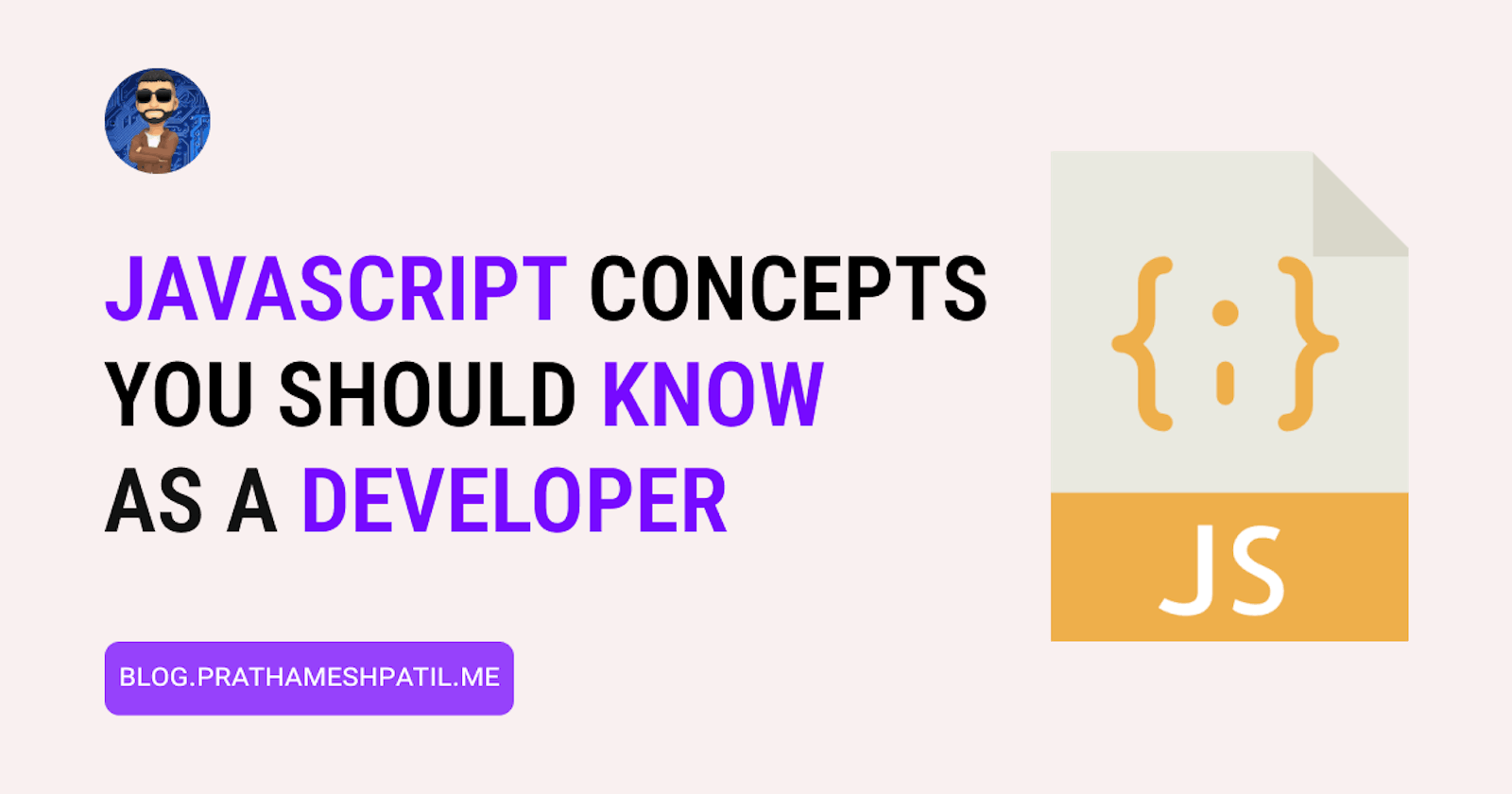Hey There👋, Javascript is everywhere. Millions of web pages are built on JS.
Let's discuss some basic concepts of javascript which are important to learn for any javascript developer.
Scope
Scope determines the accessibility of variables, objects and functions.
In Javascript, a variable has 3 types of scope:
Block Scope
var weatherToday = "Cool"; const weather = () => console.log(weatherToday); // Cool weather(); console.log(weatherToday); // CoolFunction Scope
// Variables defined inside a function are not accessible (visible) from outside the function. function myFunction() { var carName = "Volvo"; // Function Scope }Global Scope
// Global variables can be accessed from anywhere in a JavaScript program. var x = 2;
Hoisting
Hoisting in Javascript is a behavior in which a function or variable can be used before declaration.
In terms of variable and constant keyword var is hoisted, and let and const does not allow hoisting.
test = 6;
// using test before declaring
console.log(test);
var test;
Closures
Closure means that an inner function always has access to the variable of its outer function, even after the outer function has returned.
cons first = () => {
let greet = "Hello";
const second = () => console.log(greet);
return second;
}
const newFun = first(); //Hello
Callbacks
A callback function can be defined as a function passed into another function as a parameter.
//function
function greet (name, callback) {
console.log('Hi' + ' ' + name);
callback();
}
//callback function
function callMe() {
console.log('I am callback Function');
}
// passing function as an argument
greet('Peter', callMe);
Promises
Promises are a good way to handle asynchronous operations.
It's used to find out if the asynchronous operation is completed or not.
A promise may have one of three states Pending, Fulfilled, or Rejected.
Async & Await
Stop and Wait until something is resolved.
- We use the async keyword to represent that the function is asynchronous.
The async function returns a promise.
const showPost = async () => {
const res = await fetch('https:xyz.com/post')
}
showPost();
Conclusion
I hope the information provided was helpful and informative. If you have any further questions or need clarification, feel free to leave a comment or reach out to me through Twitter or LinkedIn. It would be great to connect and continue the conversation.
👋Thank you for taking the time to read this article. See You next time!
Don't forget to Subscribe to My Newsletter.

